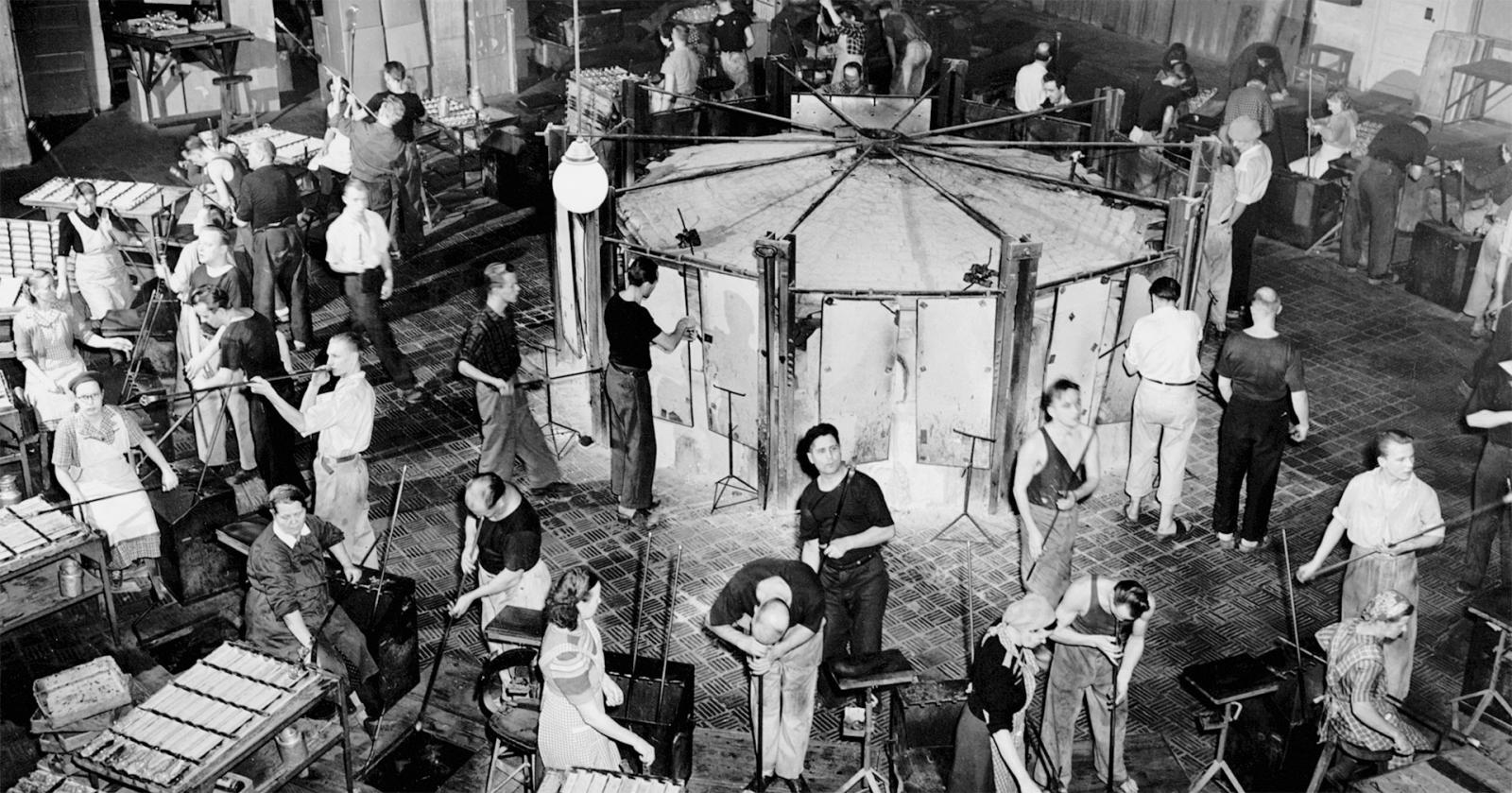Light years
In the 1920s, a domestic electric lamp service began. Our own 120 V bulb production under the Airam trademark started in 1926. There are different theories about the origin of the name. Osram, Tungsram – the ’ram’ suffix as in the chemical element wolfram (tungsten), or perhaps the name ‘Maria’ in reverse?
A glassworks was established at Punavuori in Helsinki in 1933. In addition to bulb blowing, the inner bottles for thermos flasks, among other things, were later made there. The neon light unit was established in 1936. Cooperation was carried out with architects and advertisers, so neon signs began to colour the townscape in a new way, particularly in the capital region.
During the war years, old bulbs were repaired due to lack of materials and the neon signs were extinguished. Black versions of the red thermos flasks were manufactured for the medical services. From 1948, neon signs were once again permitted in the townscape of Helsinki after the scarcity of energy during the war years.
In 1952 at the Helsinki Olympics, the large results board designed and manufactured by Airam attracted international attention. An Airam representative controlled the board by relays behind it. The same technology was later successfully used in a computer-aided way, for example at the European Athletics Championships in 1971 and the Moscow Olympics in 1980.
In the 1950s, our own glassworks produced, among other things, fluorescent bulbs that imitated natural daylight and De Luxe daylight lamps. Product development produced innovations such as the Neonlux and Neondymlite bulbs that emitted pleasant light.
Inspired by light
In 1960, the WIR bulb designed by Tapio Wirkkala won a prize at the Milan Triennial.
The production of electric light bulbs became largely automated in the 1960s. Airam’s lamp factory also inspired artists. The ’elävä arkiso’ (living archive) series by the Finnish Broadcasting Company (YLE) has shown Fredrik Hackman’s film Ljuset (Light), the music of which was composed by Henrik Otto Donner. The film is about the manufacture of incandescent light bulbs at the Airam lamp factory in Helsinki by means of images and modern jazz.
In the 1970s, the manufacture of high-pressure sodium lamps and fluorescent bulbs was launched at Suutarila in Helsinki.
Significant consumer education and customer training were practised throughout the decade. There were books, lectures and films and the company’s own exhibition and customer training facilities were completed in the 1980s.
In the 1990s, our range of products expanded to include garden luminaires, floodlights and decorative lighting. In the 2000s, the first LED and solar products hit the market.
In 2015 at the Habitare fair, Airam unveiled the prototypes for its OLED luminaires designed together with the School of Arts, Design and Architecture at Aalto University. In 2020 at the Jyväskylä Electric fair, Airam introduced wireless lighting control solutions for public premices and homes as part of a smart home.







